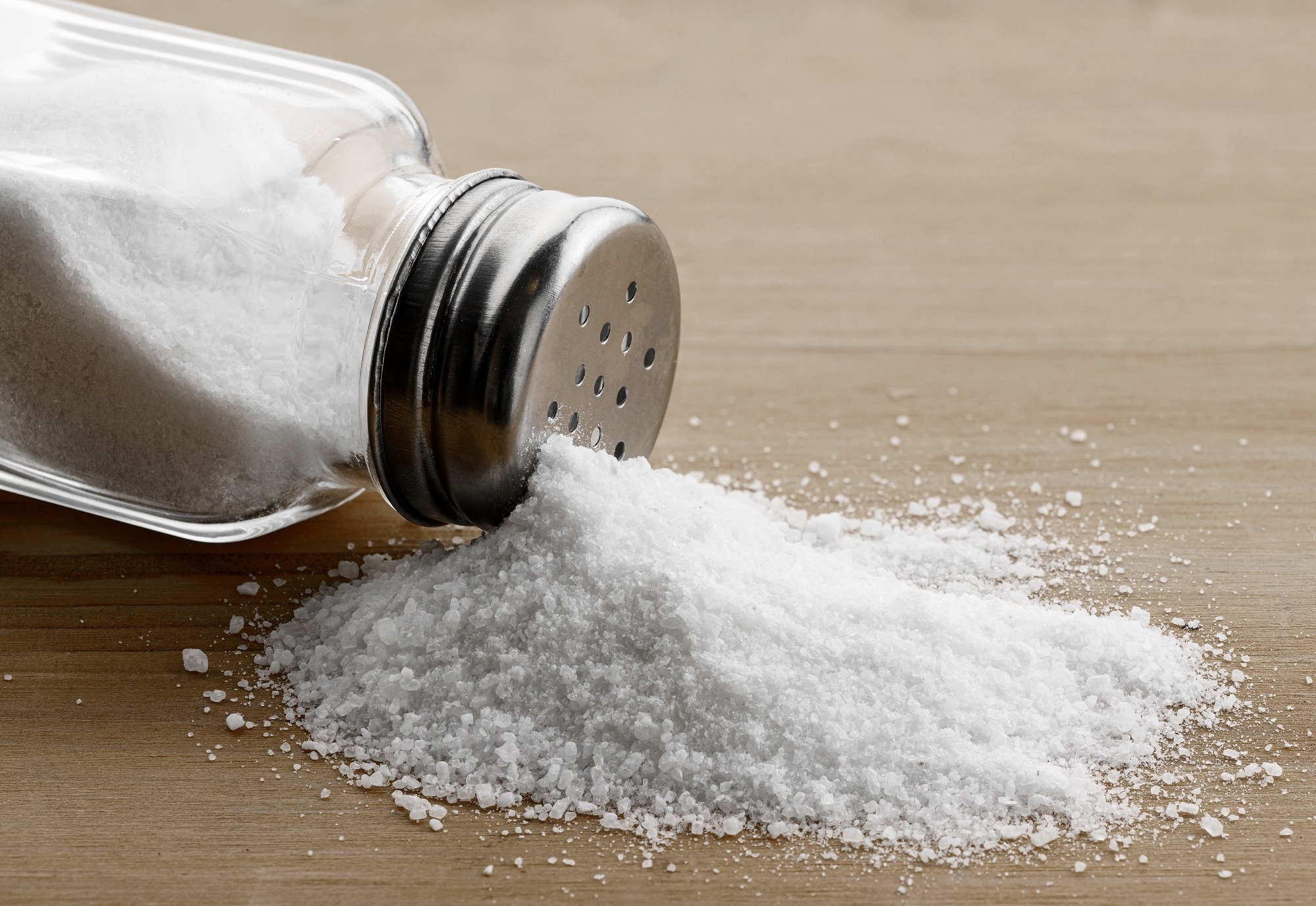In a current research printed in Gastric Most cancers, researchers investigated how steadily individuals in the UK add salt to their meals on the desk and the way this pertains to their threat of creating abdomen most cancers.
 Research: Including salt to meals at desk as an indicator of gastric most cancers threat amongst adults: a potential research. Picture Credit score: Soho A Studio/Shutterstock.com
Research: Including salt to meals at desk as an indicator of gastric most cancers threat amongst adults: a potential research. Picture Credit score: Soho A Studio/Shutterstock.com
Background
Current analysis has raised considerations in regards to the rising prevalence of abdomen most cancers amongst younger people worldwide.
Whereas researchers affiliate dietary salt consumption with an elevated incidence of gastric most cancers amongst Asians, there are restricted outcomes from Western cultures from case-control research.
Salt can injury the abdomen mucosa, growing its vulnerability to Helicobacter pylori colonization and elevating the danger of gastric most cancers via mechanisms aside from an infection, akin to harming gastric epithelial cells with chemical carcinogens and N-nitroso molecules. Present proof on whole or added salt consumption has different outcomes, warranting additional analysis.
Concerning the research
Within the current potential research, researchers investigated the hyperlink between including salt to meals on the desk and the danger of abdomen most cancers.
The crew used multivariate Cox regressions to evaluate the connection between the frequency of salt addition to meals and the danger of creating abdomen most cancers amongst 471,144 United Kingdom Biobank people.
They excluded people with prior histories of most cancers or renal sickness and people with incomplete information on salt consumption, urine sodium or potassium ranges, and physique mass index (BMI).
At baseline (between 2006 and 2010), the crew used touchscreen surveys to find out the frequency with which contributors integrated salt of their meals. They used the ion-selective electrode methodology to evaluate urinary sodium, potassium, and creatinine ranges in spot urine samples and INTERSALT equations to foretell 24-hour urinary sodium excretion.
The researchers decided gastric most cancers incidence based mostly on the linked nationwide most cancers registry information and the tenth revision (ICD-10) codes of the Worldwide Classification of Illnesses.
As well as, they examined the connection between spot urine sodium and gastric most cancers threat and the connection between the frequencies with which contributors added salt to meals and different sodium consumption indicators (whole sodium in weight loss program and urine).
The crew used Cox proportional hazard modeling to calculate the hazard ratios (HR) for the evaluation. Covariates within the research have been age, physique mass index (BMI), intercourse, ethnicity, academic attainment, Townsend index, smoking, meals, bodily exercise, alcohol consumption, comorbidities, diuretic utilization, and Helicobacter pylori an infection standing.
In sensitivity analyses, the researchers eradicated non-white individuals with comorbidities and Helicobacter pylori infections and the preliminary follow-up yr.
Outcomes
Over an 11-year median follow-up, the researchers recognized 640 occurrences of abdomen most cancers. People who add salt to meals on the desk usually tend to be much less educated, non-white males, previous or present people who smoke, dwelling in deprived areas, and consuming vital quantities of alcohol (≥16.0 grams per day).
In multivariate analyses, the HR worth for the danger of gastric most cancers amongst individuals who normally add salt to their meals on the desk vs. those that by no means or seldom achieve this was 1.4.
The researchers found a linear and constructive relationship between estimated 24-hour urine sodium ranges and the frequency of salting meals. There have been no vital relationships between 24-hour urine sodium estimates and gastric most cancers (HR, 1.2).
Sensitivity analyses produced related findings. There was no proof of heterogeneity by most cancers location, with HRs of 1.0 for 264 cardiac sufferers and 1.1 for 163 non-cardia instances.
People who added salt to desk meals by no means or not often, generally, steadily, or at all times had urine sodium ranges of two,932 mg, 3,028 mg, 3,129 mg, and three,168 mg per day. Equally, the log-spot urine sodium concentrations on the corresponding frequencies have been 1.8, 1.8, 1.9, and 1.9 mmol/L.
The people’ frequency teams corresponded to 1,864 mg, 2,040 mg, 2,196 mg, and a pair of,254 mg of sodium consumed every day.
Conclusions
The research discovered that salt addition to meals on the desk will increase the danger of abdomen most cancers amongst UK adults. People who consistently integrated salt of their diets confirmed a 41.0% larger likelihood of buying abdomen most cancers in comparison with those that seldom or by no means added salt.
The researchers additionally found a good dose-response relationship between spot urine sodium ranges and 24-hour sodium excretion in urine.
Nonetheless, contemplating 24-hour urine salt as an publicity revealed no relationship with abdomen most cancers threat. After eliminating abdomen most cancers instances recognized within the preliminary follow-up yr, these associations have been barely extra strong and indicated reverse causation.
The findings are in line with earlier meta-analytical analysis of potential trials reporting larger abdomen most cancers dangers amongst Asian communities consuming plenty of salt, pickled meals, salted seafood, and processed meat.
Additional analysis with bigger pattern sizes is required to judge potential variations throughout most cancers subtypes and enhance quantifying the affiliation between salt consumption and abdomen most cancers threat.
